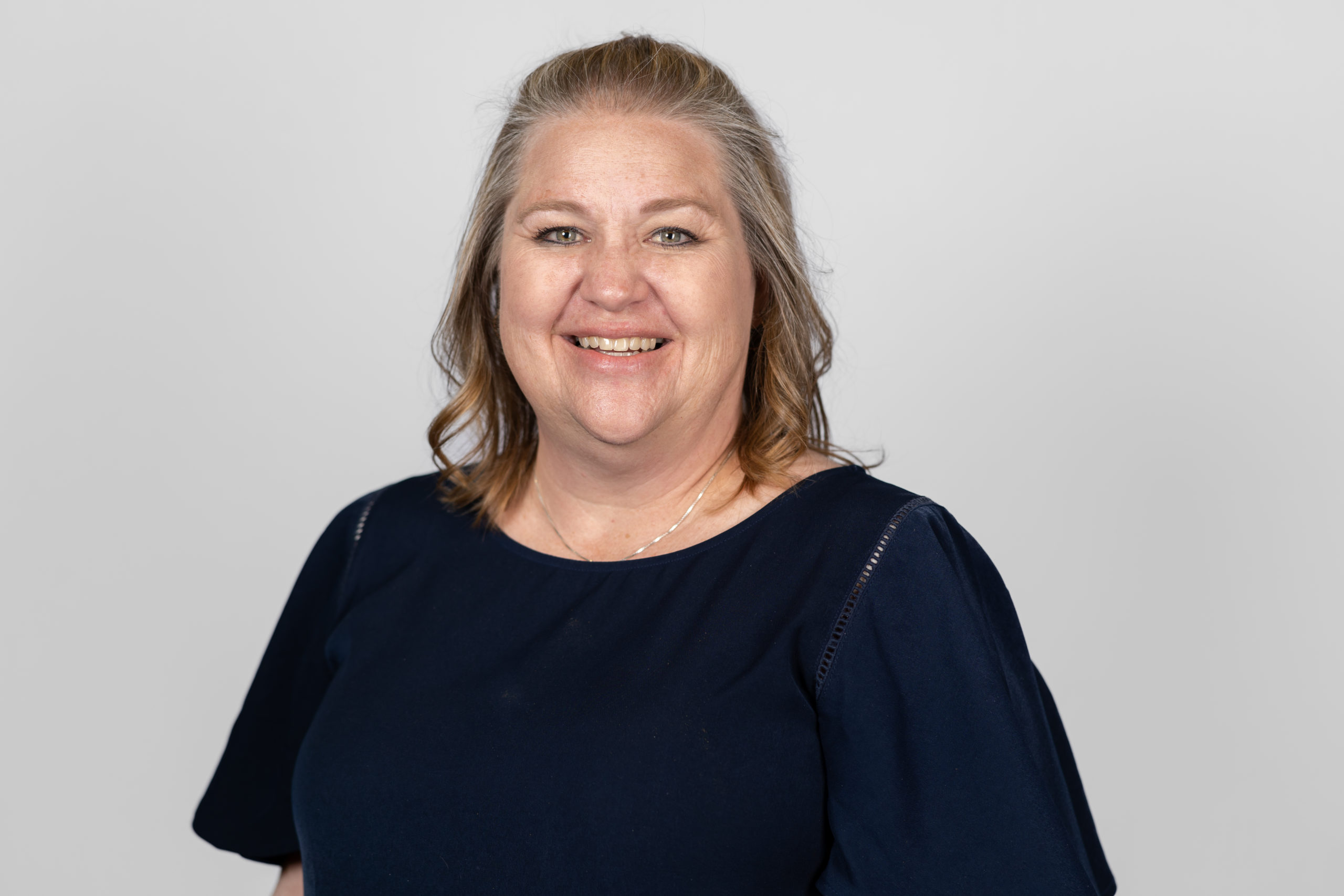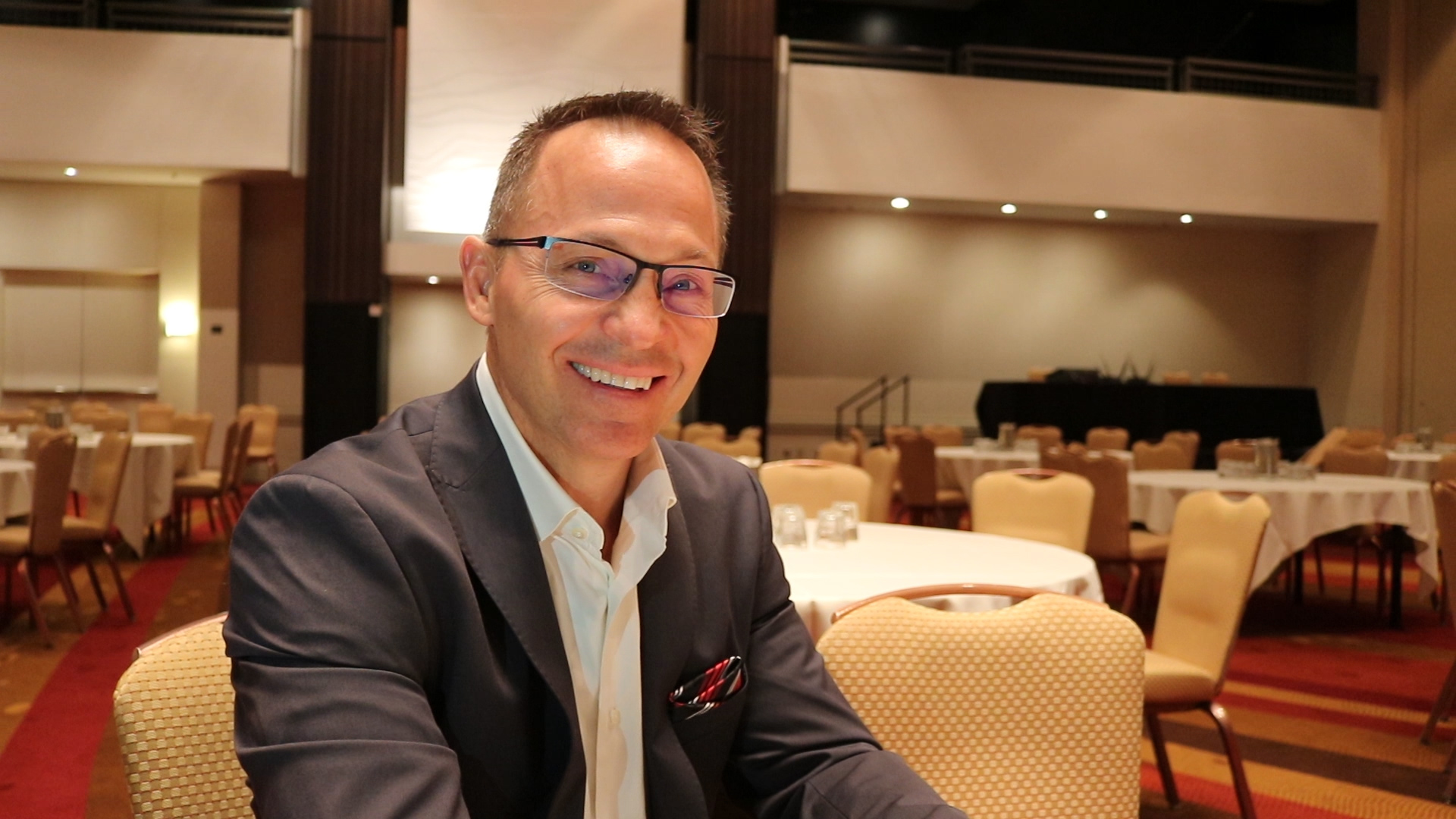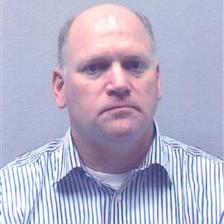After almost two decades in the industry, I was presented with the opportunity of becoming a risk manager late last year. Until that point, much of my experience in risk management had been in the OccMed/Work Comp arena or the Safety world. I ultimately accepted this position knowing it would be the perfect way to hone my liability skill set. I still consider myself a new risk manager and I am continually learning, but there are a few things I learned right up front that I thought would be helpful shares for anyone new to this world, or new to an organization. These might also be good reminders for anyone who’s been doing the job for a while, because remember, attrition happens all the time.
- Be available! Be visible, be present. I cannot stress this enough. Answer the phone when you can, or return the call ASAP, and always respond to emails. Being available, responsive and accessible will go a long way. You can consider this “money in the bank."
- Build relationships. Not just relationships at your own level or within your peer group, but relationships with others up and down the rank and file alike. You should have a strong relationship with your Work Comp and Safety teams, and your legal team should be your BFF.
- Be approachable…this includes being visible and present. You don’t want the first time someone meets you to be when there’s a “negative” event. Attend other division/department weekly or monthly meetings and get out and visit them at their location.
- Pay attention! Pay special attention to your work comp and safety teams. If you aren’t on the front end of prevention, your plate will be full of reactionary type activity, and from the wise Ben Franklin, “an ounce of prevention is worth a pound of cure.”
- Listen. Listen more than you talk, but when you do, ask the right questions: Will there be horses? Will there be alcohol? Will there be a helicopter? Will there be fireworks? Do they have insurance? Did we do it? If we did it, how much of it did we do?
- Learn from the boots on the ground. Again, trust me, no one is going to visit you in your office. If you want to know what’s going on, and you should, go spend time with and where your employees are. Go on ride-alongs, go out to the excavation site, go on a tour of the water treatment plant or the recycling plant, and yes, even get yourself out to the landfill. Get out of your office!
- Find out what’s “eating your lunch.” Is it backing up into fixed objects, is it needlesticks, is it use of force? If you don’t know, figure it out and then work with the right people to fix it.
- You can’t do it alone. Trust me when I tell you, it takes a village. If you try to go at this alone, you will not be successful.
- Don’t be afraid. Don’t be afraid to ask others in the industry what they’re doing (use association/group member list serves). Don’t be afraid to bring in a consultant, OSHA, insurance liaison, vendor, etc. You might just be amazed at their recommendations. A second set of eyes or ears never hurts.
- Wave that magic wand and dub everyone a safety manager or risk manager. Empower them to stop an unsafe act. People are our #1 resource. They are our eyes and ears, they are always the ones doing the task at hand, and they are always the ones at the incident.
*The views and opinions expressed in the Public Risk Management Association (PRIMA) blogs are those of each respective author. The views and opinions do not necessarily reflect the official policy or position of PRIMA.*

By: Maria E. Robinson
Risk Management Director, City of Flagstaff, AZ
Summary of Qualifications
Maria has more than 25 years in public sector, with more than 15 in the risk management industry. She currently holds the position of risk management director and has previously served as a safety and health loss control manager for the City of Tucson and occupational medical manager for Pima County, AZ. Maria's speaking engagements include: SWANA, (2019) AZPRIMA (2017 and 2018), ADEQ (2018) and NSC Southern AZ Congress & Expo (2016).
Responsibilities
Maria oversees liability, safety and workers' compensation programs for the City of Flagstaff. Service deliverables include: effectively managing the city's human, financial and physical assets and related liabilities, mitigating, minimizing and managing liability, managing workers compensation claims, training and development, OSHA compliance, risk assessments and site audits. She is also in charge of reviewing special events, certificates of insurance and contract language. Maria works with internal and external customers on a wholistic approach to ensure needs are met through established and best practices.
Business Experience
Maria has experience managing resources of varying sizes for municipal programs.
ERM Experience
Maria has completed PRIMAs four-day Enterprise Risk Management (ERM) training (ISO 31000).
Professional Affiliations
Member of PRIMA
Board Member with Arizona PRIMA
Member of National Safety Council
Member of American Society for Safety Professionals
Education
B.S.B.A. - University of Arizona's Eller College of Management
M.L.S. - University of Arizona's James E Roger College of Law
Unfortunately, these threats and other acts of mass violence is ever-present. Whether impacted directly or indirectly, when these acts do occur they can have a significant impact on a company’s property, employees and its ability to trade.
Insurance can play a role in mitigating the fallout from these malicious events. The common policies available for businesses are active shooter/ active assailant/workplace violence and terrorism insurance.
Due to similarities we can typically group active shooter/active assailant/workplace violence policies into one group and terrorism into the other.
Let’s look at the difference between these coverages:
What is the purpose of each type of policy?
Standalone terrorism & sabotage policies have been common since the 9/11 terrorist attacks. Their primary purpose is to protect a company’s assets and income in the event their business is the target of – or impacted by – an act of terrorism.
While similar in some respects, active shooter/active assailant insurance has emerged in recent years to offer coverage for malicious incidents not designated as acts of terror, with a focus on incident response costs, victim coverages, business interruption and potential legal liabilities. Workplace Violence can be added to this group as well.
How do you define an act of terrorism, sabotage or active assailant attack?
In short, an act of terrorism or sabotage is a violent or subversive act committed for political, religious, ideological or similar purposes.
Alternatively, an active assailant event is considered to be any physical attack with the intention of killing or causing bodily harm, including attacks using any handheld weapon, explosive device, acid or vehicle. Active shooter/deadly weapon/active assailant/workplace violence events aren’t restricted to political, religious, or ideological events.
What are the differences in coverage?
The difference in cover between a terrorism & sabotage insurance policy and an active assailant insurance policy largely comes down to the likely impact of each type of event.
For instance, a traditional terrorism & sabotage insurance policy will focus primarily on property damage and business interruption cover. The assumption is that an act of terror will most likely cause damage to a business’ assets or property or impact their ability to trade for a sustained period of time. It has a narrower scope
of what events will trigger the policy, but it allows for deeper protection of the insured’s assets and income which reflects the greater loss from physical damage that can occur in a traditional terrorism event. A good policy will offer sub limited cover for the restriction of access to premises, as well as contingent business interruption and utilities cover to help protect the business if its trading partners or key services are impacted by an attack.
In the case of an active assailant/workplace violence/active shooter event however, the cover is designed to respond to a much broader definition of events but offers more limited cover for property damage and business interruption. Instead, workplace violence/active assailant insurance products assume the primary impact of an attack will be to the victims, customers and employees, and is designed to provide cover for victim and organization support costs and crisis management costs, as well as the insured’s legal liabilities. Loss of attraction can also be included within the provided business interruption cover to help the insured recover from any prolonged impact to revenue.
*The views and opinions expressed in the Public Risk Management Association (PRIMA) blogs are those of each respective author. The views and opinions do not necessarily reflect the official policy or position of PRIMA.*

By: Paul Marshall, CPCU
Managing Director, Active Shooter / Workplace Violence / Crisis Risk Insurance Programs, McGowan Program Administrators
Summary of Qualifications
Paul has 30+ years of insurance and underwriting program management experience. For the last seven years, he has developed and managed one of the largest active shooter/workplace violence/crisis risk insurance programs in the country. Paul has presented at multiple PRIMA conferences, and is a frequent contributor to PRIMA blogs and podcasts as well as national news outlets.
Responsibilities
Paul is responsible for the overall management of the active shooter workplace violence insurance program with his entity.
Professional Affiliations
PRIMA, University Risk Management and Insurance Association (URMIA), Wholesale and Specialty Insurance Association (WSIA), Risk and Insurance Management Society (RIMS)
Education
Bachelor of Science - Miami University (OH)
Click HERE to read Part 2
Fleet safety begins with establishing a fleet safety management program that has clear and concise policies and procedures, communicated to all employees, with employees clear understanding of consequences of not meeting the organization’s standards for safe driving. Also, the importance of management consistently modeling expected behaviors cannot be over emphasized.
To change behaviors, supervisors need to define clear and concise expectations, model expected behaviors, hold drivers accountable, engage by seeking coaching opportunities that being reinforcing and redirecting behaviors, conduct accident analysis to identify when distracted driving is a causal factor in the accident.
The concept of accountability is quite simply a measure of what gets done. The question is this…..what does management pay attention to, measure and control and how does that affect employee behavior? If one of your officers followed you around for the day what message would he or she get? That safety is clearly important to you and distracted driving prevention is a primary focus of yours? That safety is sometimes important and officers should be careful when driving? Or, you’re only talking safety because you have to and distracted driving is “part of the job”? Each driver's, supervisor's and manager's performance of fleet safety responsibilities should be included in formal and informal performance appraisals. In essence defining clear and concise expectations and holding people accountable for their responsibilities. Remember, one of safety’s greatest failings is giving responsibilities without also assigning accountability.
Supervisors may be the only managerial staff that have accessibility to front line officers on a continuous basis. The supervisor is in the best position to identify and address hazards, faulty equipment, at-risk behaviors, poor driving habits or methods and other causes of vehicular incidents before they occur. Therefore he or she is in the best position to influence driving behaviors. Supervisors should take an active role in changing behaviors by modeling safe behaviors and continually observing and giving feedback (coaching) to officers by reinforcing safe behaviors and constructively redirecting at risk behaviors.
Do they review accidents where the direct result is of distracted or inattentive driving? Have they looked for root causes and whether officer distraction was a causation? All accident and near miss analysis should investigate driver distraction as a possible causation and when identified, appropriate action taken to prevent repeat occurrences.
Management and leadership need to set the example by preparing a fleet safety management program with clear and concise policies and procedures that are communicated to all employees to include consistently enforced standard of safety for prevention of distracted driving incidents and management consistently models expected behaviors. As for fleet safety programs, corrective action policies and procedures are communicated to all employees who drive so they clearly understand the consequences of not meeting the organization’s standards for safe driving. Each driver’s, supervisor’s and manager’s performance of fleet safety responsibilities should be included in performance appraisals.
Bottom line is distraction-affected crashes are preventable. Distracted driving does not just happen it is a choice. Working together, you can all help reduce driver distraction, save lives, and prevent injuries.
*The views and opinions expressed in the Public Risk Management Association (PRIMA) blogs are those of each respective author. The views and opinions do not necessarily reflect the official policy or position of PRIMA.*

By: Scott Durbin
Transportaion Specialist, Travelers/Northland Insurance
Scott has been head of fleet risk control for Travelers/Northland Insurance since 2015. Prior to that, he was an Indiana State Trooper for 30 years. Scott also spent 15 years in the Commercial Motor Vehicle Division. In his current role, Scott assists customers with fleet risk control to mitigate their risk.
Click HERE to read Part 1
What are some best practices in preparing fleet safety policies and procedures?
A best practice in preparing fleet safety policies and procedures is to consider what steps will be needed to best motivate changes in officer’s driving behavior to better manage distractions arising out of their duties.
Many behaviors officers engages in are predictable and many are by choice. For example, if you were making a left-hand turn and all of a sudden you noticed your flashlight moving on the passenger seat…what would you do? What would most people do? Reach for it by taking your hand of the steering wheel and eyes off the roadway? There are many influences in our lives that lead to decisions we make while driving. From a management perspective the need to establish a standard for safety for prevention of distracted driving is a must.
So how do leaders establish a standard for safety? As a supervisor, you are in the best position to set the standard for safety. As you look at the issue, note that some situations may involve more than ONE of the three types of distractions: Visual, Manual, and Cognitive
Here are a few recommendations to help preparing a meaningful fleet safety and procedures policy. Adopt and enforce a policy for the use of seatbelts in department vehicles by all law enforcement agencies. Creation of a training/educational video or in-service training. Examine and evaluate the number of hours and the types of driver training and in‐service programs needed to reduce officer‐involved fatal or serious injury crashes. Conduct research on speed by law enforcement officers as a factor in fatal crashes; equipment and technologies in patrol vehicles as a distraction; equipment configuration in patrol vehicles as factors that increase the risk of serious injury or death in crashes; and fatigue as a factor in officer involved crashes.
Prohibit use of handheld communications and portable electronic devices not necessary to the performance of their official duties while a vehicle is in motion, establishing approved work methods (best practices) for in-vehicle officer-equipment interaction and communication operations
A policy alone, will not likely solve the problem. It is, nevertheless, a necessary and needed step in the prevention of distracted driving.
Any policy adopted should include the overarching goal of minimizing distractions and helping officers to maintain both hands on the steering wheel while the vehicle is in motion. It should also cover both agency and personally owned wireless voice/data communication devices either in agency owned vehicles or in privately owned vehicles when officers are on duty or conducting official business.
Remember that established fleet safety policies and procedures that define driver expectations need to be clearly communicated, together with the consequences for non-compliance. Adopt and enforce policies to prohibit use of handheld communications and portable electronic devices not necessary to performance of official duties while a vehicle in in motion
Lastly, comply with all federal, state, and local laws and regulations regarding the use of mobile technology devices including cellular phones. Use of hand-held cellular phones and other personal consumer devices while driving is prohibited except during exigent circumstances. Cellular phone calls using hands-free technology while driving, if any, are kept brief. Extended conversations should only be made while not driving. Sending text messages or e-mails, dialing cellular phones, viewing television, videos or DVDs and inputting data into laptop computers, personal digital assistants or navigation systems is restricted and limited situations only. Radio traffic generated by the vehicle operator while the vehicle is in motion is limited to operational traffic and is kept brief.
What should you look for in your training program dealing with distracted driving?
You should examine and evaluate your driver training and in-service programs to ensure that distracted driving policies are incorporated into roll call and in-service training and emergency vehicle operations courses. Field training officers process should also focus on driving and driver distraction prevention. Supervisors should also be involved with this behavioral coaching.
Driver skills training, including instruction on distracted driving, should be provided to entry‐level officers and annual in‐service training. The training should be based not just on the mechanics of defensive and/or pursuit driving, but also on decision making in conjunction with driving operations and the adoption of policies and procedures to deal with distracted driving. Supervisors should also engage officers in distraction avoidance through observations and coaching, giving reinforcing feedback for safe behaviors, and constructive redirecting feedback for at risk behaviors. Your Field Training Officer process should include a focus on distraction prevention.
Law enforcement departments should examine and evaluate the number of hours and the types of driver training and in-service programs needed to help reduce officer-involved vehicular accidents. This should include specialized training on prevention of distracted driving. Part of training planning is the determination of how supervisors will follow-up and coach officers to reinforce proper behaviors learned in the training and redirect at-risk behaviors when observed. Field Training Officers processes should include progressive in-vehicle orientation training for officer on distraction prevention and use of mobile data, communication and other in-vehicle equipment.
*The views and opinions expressed in the Public Risk Management Association (PRIMA) blogs are those of each respective author. The views and opinions do not necessarily reflect the official policy or position of PRIMA.*

By: Scott Durbin
Transportaion Specialist, Travelers/Northland Insurance
Scott has been head of fleet risk control for Travelers/Northland Insurance since 2015. Prior to that, he was an Indiana State Trooper for 30 years. Scott also spent 15 years in the Commercial Motor Vehicle Division. In his current role, Scott assists customers with fleet risk control to mitigate their risk.
What is distracted driving?
According to the National Center for Statistics and Analysis March 2020 driver report, 2,841 people were killed in a motor vehicle crash involving distracted drivers. Mobile technology devices and systems for law enforcement officers can present a risk of distraction and can lead to an increase in the risk of motor vehicle accidents, especially under stressful conditions. Distracted driving is nothing new and in fact it continues to present a significant area of risk to address. How big is the distracted driving problem? In everyday life, we may get distracted or take away our attention from the driving task for so many reasons. A cell phone rings that we think needs to be answered, a text message that we think needs to be read or responded to, a drink spills from its holder, or something slides from the seat to the floor. Distractions are everywhere. A NHTSA 100 car naturalistic driving study conducted in 2006, showed that text messages on cell phones or mobile data terminals increases the chance of being involved in a crash over 23 times.
Driving can be an essential function of being a law enforcement. The distractions faced while driving on duty are many and can present significant risk to the safety of the officers and others. Many distractions are considered to be part of the job. In addition to activities undertaken by the “every day” drivers, law enforcement officers may engage in additional, job-related types of multi-tasking that can divert their attention away from driving, such as: scanning approaching traffic and the roadside for suspicious behaviors, entering queries into the mobile data terminal, recording the location of a call for service or the description of a wanted person or vehicle, activating emergency equipment, talking on the police radio, and vehicle equipment/technology interaction, to name a few.
Law enforcement leaders throughout the industry have continuously pointed out the importance of reducing the risk of injuries and fatalities in and around police vehicle operations. Reducing distractions and the impact of distractions as much as possible is their goal.
Policing is an inherently dangerous job and one of the primary exposures to injury and death involves motor vehicles. According to the National Law Enforcement Officers Memorial Fund Research Bulletin in 2013, law enforcement officers are four times more likely to be involved in a crash than a civilian motorist.
Three types of distractions commonly impact driving behavior: visual distractions (taking one’s eyes off the road), manual distractions (taking one’s hands off the wheel) and cognitive distractions (taking one’s mind off the basic task of driving). Think about when you text a message or enter data into a mobile data terminal. You incorporate all three types of distractions during this activity. Our brains are not good at multi-tasking and in this case, applying the attention to the road that may be necessary to prevent an accident.
What might present distraction while officers drive?
There is a wide variety of things which can distract officers while driving. The following are things to consider when thinking about development of Standard Operating Procedures or best practices or when training officers. This list contains just some of the things which could distract an officer:
- Officers using cell phones either for business and or personal use.
- Driver cockpit design that requires reaching for tools or objects in the vehicle.
- Mobile data terminals interaction.
- Interactions with laptops.
- Navigation systems, audio and video systems, police radio communications emergency and non-emergency.
- Activating emergency equipment.
What are some thoughts in driver work station designs?
Unfortunately, there is no current standard for the optimal positioning, placement and usage of in vehicle equipment, which may include Mobile Data Terminals, communications equipment, radar equipment, etc. Some things to consider are: Who sets up the equipment for your fleet of vehicles? How does information get to the officer while driving? What equipment goes into the vehicles visual/audio design? How is the equipment placed and have best practices for usage been developed? Is there a place for everything and is everything in its place?
Part of work station design is to select equipment and analyze if the equipment is necessary and the benefit of utilizing new technologies. Then look at the placement keeping in mind ergonomics, safety, usage, officer and dispatch interactions.
What in-vehicle new technology is being used, for example, lane departure warning, crash-imminent braking, forward collision warning, rear-view cameras, are feasible means by which to help mitigate distracted driving crashes. Having these collision mitigation systems installed in police vehicles can direct drivers’ awareness to relevant events of interest and simultaneously can offer drivers feedback regarding potential collisions. Similarly, these types of crash awareness applications in vehicles already are beginning to help prevent crashes that occur because of distraction, fatigue, and inattention. Consideration should be given to the selection, purchase and use of new technologies to deter distracted driving behaviors for example crash warning systems, MDT vehicle interface, telematics, etc. Recognition of interior of police vehicles as “cockpits” can help focus the design. Also, disconnect and/or remove distracting devices and options that have little use on patrols.
Then you should give attention to safe placement and or securement of mobile data, communications and other equipment to deter in-vehicle injury. Develop approved work methods for officers with interaction with mobile technology and communication operations while operating a motor vehicle.
*The views and opinions expressed in the Public Risk Management Association (PRIMA) blogs are those of each respective author. The views and opinions do not necessarily reflect the official policy or position of PRIMA.*

By: Scott Durbin
Transportaion Specialist, Travelers/Northland Insurance
Scott has been head of fleet risk control for Travelers/Northland Insurance since 2015. Prior to that, he was an Indiana State Trooper for 30 years. Scott also spent 15 years in the Commercial Motor Vehicle Division. In his current role, Scott assists customers with fleet risk control to mitigate their risk.
Earlier this year, I shared my predictions for 2022’s workplace health and safety trends in Public Risk magazine. As we embark on the second half of this year, let’s reflect on a few of these predictions.
Increase of Workplace Injuries
With the “Great Resignation,” we have seen a record number of workers switching jobs and organizations hiring new workers, while still being understaffed — meaning less time for training. Without a proper training process, organizations put themselves and their employees at greater risk for workplace injuries.
In-person workplaces aren’t the only ones at risk. According to a Chubb study, 41% of remote workers reported pain developing in their backs, shoulders, and wrists, possibly due to the need for more ergonomically sound home workplaces.
As such, I foresaw an increase in workplace injuries in 2022. And this has proven to be true. At Company Nurse, we have seen an increase in workplace injuries, up by 38.34% from this time last year. It’s important now more than ever to have a plan in place to address these rising workplace injuries including nurse triage and solutions for reporting of and training on workplace safety issues.
Mental Health in the Workplace
Employee mental health was a hot topic of 2021. In fact a Mental Health America study reported that 85% of employees believe their workplace affects their mental health and wellbeing.
I shared my prediction that the focus on employee mental health and wellbeing would continue to destigmatize mental health and drive innovation of digital mental health resources.
The prediction that the demand for these resources would continue to grow was correct, according to the American Psychological Association, who reports that “Eight in 10 U.S. workers say that how employers support their employees’ mental health will be an important consideration when they seek future job opportunities, while 71% believe their employer is more concerned about the mental health of employees now than in the past.”
A Willis Towers Watson study also reports that “Nearly all (86%) of employers said that mental health, stress and burnout are a top priority; however, half (49%) have not yet formally articulated a wellbeing strategy for their workforce and only a quarter have already articulated and adopted a wellbeing strategy.”
It may seem overwhelming to create a plan, especially since I was correct in that the number of digital mental health tools will continue to grow. In fact, the “digital behavioral/mental health market is set to witness an exponential growth rate of 25% in the next five years.”
Implementing a plan doesn’t need to be difficult! If you are one of the employers looking for a strategy, look for a digital health and safety tool that hosts all your solutions. This way, you provide employees with direct and easy access to your organization’s employee assistance program so they can utilize mental health resources.
Employee Privacy and App Fatigue
Employees are suffering from app fatigue and may be hesitant to use employer apps, for fear of losing their privacy. I predicted the increased need of HIPAA technical safeguards for encryption, multi-factor authentication, and audit logging.
And according to a BenefitsPro survey, this prediction was correct. The survey reports that “the demand for privacy protection [has reached] an all-time high and that, “compared to two years ago, half of the employer respondents report their companies are spending more time and resources dealing with data privacy and security risks related to/ more people working remotely.
An important part of your organization’s security plan is ensuring that the external tools you utilize do incorporate these HIPAA safeguards.
Artificial Intelligence and the Customer Experience
If this year has taught us anything, it is how quickly market needs drive innovation. Which, of course, includes artificial intelligence (AI). I predicted the adoption of artificial intelligence to both increase data quality and the customer experience.
This has proven to be true at Company Nurse as we continue to see a demand from clients for AI channels for digital workplace injury reporting. Gen Z and Millennials, who make up more than half of the current workforce, not only prefer digital workplace processes, but expect them of their employers. And when employees can utilize the channel that they are most comfortable with, they will have more confidence in the injury reporting, which, in turn, leads to an increase in data quality.
*The views and opinions expressed in the Public Risk Management Association (PRIMA) blogs are those of each respective author. The views and opinions do not necessarily reflect the official policy or position of PRIMA.*

By: Paul Binsfeld
President and Founder, Company Nurse | CEO, Lintelio
Summary of Qualifications
Paul is the founder and president of Company Nurse, LLC.
In 2012, Paul was honored with the Hall of Fame Innovator Award from Business School Lausanne for creating a niche segment in the workers’ compensation industry where one did not exist before. He is also recognized as an authority in the industry and participates in speaking engagements for the Entrepreneurial Insurance Symposium, Workers' Comp Executive Forum and the Entrepreneurs Organization's Global Leadership Conference in Washington, D.C.
In 2016, Paul founded Enspiri Solutions, the first-to-market software platform for workers’ compensation nurse triage management, utilized by Company Nurse.
In 2020, Paul led Company Nurse in developing screen by Company Nurse, the COVID-19 screening tool and testing/vaccination reporting solution. And, in 2021, he led the launch of Company Nurse’s sister company and the digital workplace health and safety solution, Lintelio, for which he is the CEO. An evolution of screen by Company Nurse and Enspiri, Lintelio addresses pandemic needs of clients (screening, test and vaccination reporting), workers’ compensation nurse triage management and other workplace health and safety solutions.
Most recently, in 2021, Paul accepted the position of Honorary Consul of Luxembourg to Arizona and New Mexico. In this role, he promotes business, cultural, educational and tourism exchange between Luxembourg, Arizona and New Mexico.
Responsibilities
Paul provides leadership to all departments within both organizations, generating growth and profitability.
Business Experience
Paul holds over 35 years of experience in the insurance industry. Twenty-five years ago, he founded Company Nurse and continues to serve as founder and president and as CEO of Lintelio.
Professional Affiliations
Paul is a member of the Arizona chapter of Entrepreneur's Organization and has served on its board.
Passionate about fostering entrepreneurialism and innovative ventures for the youth, Paul has served on the Board of Advisors for AIESEC, a global organization that has 60 years of experience in developing high-potential youth into globally-minded, responsible leaders.
Education
Paul received his Bachelor of Science degree in finance from Arizona State University and his MBA degree from Business School Lausanne in Lausanne, Switzerland.
In our industry, our success depends on developing, maintaining, and championing lasting relationships with our self-insured clients, TPAs, vendors, brokers, and maybe most importantly, our coworkers. We’re only as strong as the people on our team and to be successful, you need people you can depend on. So how do you build an effective team? Here are some key components to consider:
- Put the right person in the right position, know each team member’s strengths
- Value your teammates and their unique contributions
- Check your ego at the door
- Give credit for their ideas and successes
- Make sure you have shared goals
- Consistently provide feedback
- Trust your team
- Be flexible and responsive
- Adapt your communication style to match your team’s individual differences
- Be open and receptive to ideas and input from your team
- Transparency is critical
- Invest in your team members, get to know them individually, find out what motivates them and help them continue to develop their skill set
Once you have established an effective team, make sure to cultivate relationships to keep it strong. Clients and employees remember productive interactions and associate that positive experience with your organization. Fostering teamwork is part of creating a work culture that values collaboration. This culture of teamwork creates opportunities to work together and use all available resources and skills to reach common goals.
One of our more recent innovations was to create a Client Consult team, staffed with managers who are experienced and well versed in collaboration. We have been able to work effectively with our external clients to save them money on their problematic claims. It’s not one person’s success that proves our effectiveness, but rather working together with coworkers to deliver a quality product to our clients. As a result of this team’s work, they have been instrumental in retaining accounts and increasing the visibility of what makes our organization unique and among the best in the industry.
Communication is one of the foundational pillars of this team. Sharing timely updates while working independently at the same time is essential. More importantly, maintaining a good interpersonal relationship forms people into a team. Team communication is a bridge that links each team member, and it creates a collective identity It fosters a sense of belonging and helps team members work together as a unit. I would encourage you to set a precedent for sharing ideas and welcoming new perspectives. No idea should be off-limits. Listen without judgment and foster an environment where it’s okay to respectfully disagree, apologize, and admit mistakes without negative ramifications. This is how innovation and great teamwork happen.
Relationships are not built overnight or by sheer will. They take actual work and dedication. Knowing your value and more importantly, knowing the value of your team can lead to successful and long-lasting business relationships.
*The views and opinions expressed in the Public Risk Management Association (PRIMA) blogs are those of each respective author. The views and opinions do not necessarily reflect the official policy or position of PRIMA.*

By: Patty Reinecke, RN, BSN, CCM, MSCC
Senior Medical Consultant, Midwest Employers Casualty
Summary of Qualifications
Patty is a certified case manager with 23 years of experience directly handling workers’ compensation claims.
Responsibilities
Patty is responsible for working in concert with internal and external team members to employ the most effective cost containment measures to medically stabilize claims. She reviews and interprets medical data to ensure all treatment is reasonable and necessary. She also projects future medical costs based on current diagnosis and treatment and develops partnerships with external third party administrators, attorneys, employers, internal analysts and attorneys to develop a plan of action to bring cases to successful resolution. Patty evaluates Medical Set Asides (MSAs) to ensure the allocations are accurate to prepare for settlement of workers’ compensation claims.
Business Experience
Midwest Employers Casualty
Senior Medical Management Consultant, August, 2008 – present
Missouri Baptist Medical Center
Manager, Workers’ Compensation Department, December 2003 – August 2008
Broadspire (formerly Kemper National Services)
Senior Regional Supervisor, February 1997 – November 2003
CorVel Corporation
Onsite Case Management, June 1994 – January 1997
Professional Affiliations
Certified Case Manager (CCM) #021861
Medicare Set Aside Certified Consultant (MSCC) #1043
Education
Maryville University, Bachelor of Science in Nursing, May 1993
When I first heard about the PRIMA conference, I had no idea what I was getting myself into. I had expressed to my department chair my interest in managing the risks associate with public entities, but more specifically, the US parks and wildlife, and he referred me to PRIMA’s student scholarship and encouraged me to apply. I honestly did not think once about the term “public entity” and its relation to risk management and insurance while applying nor did I think I would even receive the scholarship in the first place. When I did get accepted, it was like the curtains being pulled back from my eyes. I immediately wanted to know everything that I could about every topic that could possibly be discussed at this conference, and yet, after going to the conference, I realized that no amount of googling articles could have given me the same knowledge that these industry professionals gave me at the conference.
We started off the week with the president’s reception where I and the other 5 PRIMA student scholars got to meet the board of PRIMA, its former presidents and board members, and executives from the sponsoring companies. It was completely terrifying, I was a deer in headlights and had no idea what to do. However, contrary to popular belief, insurance professionals are extremely generous and welcoming. Before I knew it, I was meeting all of these amazing industry professionals, risk managers of cities and states, and even the PRIMA presidents (past and present). Each and every one had their own crazy stories and pieces of advice to give that I will remember forever.
The next day, we had the opportunity to attend the Keynote speaker of the day, Shawn Rhodes, who wanted to impress on everyone the importance of change and being open to it. It was truly fascinating. He has had such a different life experience than I will ever have, and yet, I feel as though his talk could be applicable in almost any other line of work. After his talk, I was able to go interact with and meet dozens of representatives from different companies at the business exchange wherein every company had their own booth to display their products and services to the state and municipal risk managers. It was honestly a great time. I was able to connect with a numerous amount of people, being that I am from Texas yet go to school in Philadelphia, and everyone wanted to bestow on us advice to help further our blossoming careers.
We then had the opportunity to attend two educational speaker sessions. The first, titled “Igniting Next Gen to Risk Management & Insurance Careers”, dove into the fact that the industry is ageing. A lot of the professionals within the insurance industry will retire within the next 5-10 years, and it is the younger generation’s responsibility to fill those vacant roles. The next session we attended was titled “The Evolution of ERM: Balancing Context, Strategy, and Reality”. This discussion helped the attendees to take into account all aspects of their company, organization, or government into their decision making process to create more money efficient and thorough business strategy.
The vast majority of the conference, however, was networking. Simple, basic networking. I spent HOURS talking to people who came from all over the United States. From the Risk manager of Miami to the risk manager of Santa Fe, I met so many people who were eager to impart their experiences in the industry upon me, and I loved it. I was a sponge soaking up as much as I possibly could, and it has made me so excited to continue in this industry. Everyone was there to connect, interact with, and help each other on top of having a good time. I hope to be able to one day come back as a professional myself and impart the same knowledge and experiences on the younger generations, so that they too will one day be as excited as I am about the future of their careers.
*The views and opinions expressed in the Public Risk Management Association (PRIMA) blogs are those of each respective author. The views and opinions do not necessarily reflect the official policy or position of PRIMA.*

By: Lucas Songy
Risk Management and Insurance Major, Temple University
Lucas is currently a rising senior risk management and insurance major at Temple University in Philadelphia, graduating May 2023. He is also pursuing a minor in both accounting and legal studies. Lucas has worked as a file clerk with the insurance litigation firm of Tollefson Bradley Mitchell & Melendi for three years and is currently interning as an underwriter for Reliance Standard Life Insurance. Lucas is very involved in his student professional organization for his major, Gamma Iota Sigma, having received the Employee Benefits Committee Member of the Year in 2021. He is also a collegiate lightweight rower, and having rowed since freshman year of high school, he is currently pursuing rowing at the international level. Lucas is an avid lover of the outdoors and is hoping to fulfill his bucket list of visiting and hiking in every United States National Park.
I am Hoto Kohoue, a graduate student at Georgia State University, majoring in quantitative risk management. Last month from June 5th to the 8th, I earned a scholarship with the Public Risk Management Association. I had the opportunity to travel to San Antonio to attend the PRIMA's 2022 Annual Conference Student Scholarship, sponsored by firms specializing in the public risk sector. The welcome reception in San Antonio allowed me to meet and connect with my peers from other universities specializing in the risk industry. I would not be thankful enough for the guidance our mentors, Donna Capria and Dan Hurley (Former PRIMA president), gave us. They advised us how to navigate risk management in the public field to achieve a successful career, whether you come from a quantitative background or not (actuary vs. underwriter). At the beginning of the trip, I didn't expect to encounter professionals with quantitative experience; still, surprisingly, I successfully connected with actuaries and data analysts from diverse insurance companies such as Gallagher Insurance and Berkley Public Entity.
Besides the networking session, I attended an educational session hosted by professional risk practitioners at the Henry B. Gonzalez convention center. Among these sessions, I found interesting the ‘succession planning strategy’ in risk management hosted by the Senior Vice President at Alliant Insurance Karen Caterino and the Director, State Office of Risk Management (Colorado) Julie Mileham. During their presentation, they explained how to facilitate the transition of the new generation of professional risk managers in the public sector, especially among the millennials and Gen Z. Another exciting session I attended was about the evolution of Enterprise Risk Management (ERM) hosted by the Managing Director, ERM at Gallagher Insurance, Lisanne Sison. In this session, she introduced a new approach to the evolution of risk management in administration. Using a real-life case with the Raleigh-Durham airport, she described how the airport authority leveraged a methodical approach to weigh consequences and opportunities for a better resources’ allocation.
Regarding my first time in San Antonio, the location choice was perfect for a summer scholarship event because I found time to visit the city with my peers. The organization chose the San Antonio Riverwalk because of the restaurants and bars to create a relaxed networking environment.
In conclusion, PRIMA's 2022 Annual Conference Student Scholarship allowed me to access tremendous network opportunities in just a short time. I learned more about the recent public sector risk management advancement through the Q&A sessions our cohort had with the respective companies' representatives. From recent alumni to executives, we had great discussions with professionals; usually challenging to reach out casually on LinkedIn. Additionally, I gained more confidence when showcasing my previous experience and knowing the character of those new connections.
*The views and opinions expressed in the Public Risk Management Association (PRIMA) blogs are those of each respective author. The views and opinions do not necessarily reflect the official policy or position of PRIMA.*

By: Hoto Kohoue
Quantitative Risk Analysis & Management / Data Analytics Major, Georgia State University
Hoto is currently pursuing a dual master’s degree in data analytics and quantitative risk management at Georgia State University. With a Bachelor of Science in applied mathematics, Hoto had the opportunity to work as a research assistant for his department to help banking and insurance companies leverage their respective market value through risk mitigation techniques. Post-graduation, he will launch his career as a quantitative analyst in the banking industry while working towards attaining his ASA designation from the Society of Actuary.
Some benefits of being a scholarship recipient of the Public Risk Insurance Management Association (PRIMA) 2022 conference in San Antonio was learning something new, reinforcing best practices and promoting a deeper understanding of public risks. Dalene Bartholomew CFE, CIFI, an insurance fraud specialist and a vice president of VRC Investigations, was one of the speakers at the conference. She is a certified fraud examiner, investigative training expert, and one of the authors of Paying a Premium for Crime. She spoke about fictional events where people lied in hopes of receiving workers’ compensation benefits. She taught me about insurance detective work, fraud trends and involving worker's compensation claims and the outcome. Also, I met with the representative from Fraudsniffr, an investigation company for insurance and defense professionals. The representative said never rely on experts; at the end of the day, whoever tells the better or more convincing story will win the litigation. He said examining social media is a cost-effective defense. The company retrieves visual evidence and metadata from Facebook, Twitter, and Instagram, combines physical surveillance data with social media and tracks the location with mobile phone data to detail activity. I never considered insurance detective work until attending the PRIMA conference.
Another session I attended was the State of the Market -2022 by Lauren Tredinnick, president, Public Entity Risk Solutions for Munich Re Specialty Insurance. She discussed the U.S. property and casualty market trends and their impact on public entities like supply chain disruption, record-high inflation, and the great resignation from Covid-19. She said property trends and renewal expectations are reduced capacity, increased deductibles, and rates. Also, she said, there is pressure on underwriting decisions. She said lower investment income due to low-interest rates puts pressure on underwriting decisions across the industry. The most significant trend to watch is wildfires, hurricanes, tornados, and climate change, like the 2021 winter storm in Texas, which brought an above-average year of natural catastrophe activity.
Moreover, the conference broadened my network to include municipalities and cohorts from different universities. We enjoyed site seeing in San Antonio. Below are some of my favorite pictures on the San Antonio River Walk. The Casino Club Building is next to Tilman Fertitta’s Salt Grass Steakhouse.
I enjoyed my mentors, Dan Hurley with the City of Chesapeake, Donna Capri, the Risk and Insurance Coordinator of WaterOne in Kansas, and Taquan Gilbert with PRIMA. The conference connected my ideas, and the network could help with the International Switch Energy Case Competition in Fall 2022. Furthermore, the conference included many facets of risk management and helped me better clarify my future in the field. I am very grateful that PRIMA chose me as a recipient of their national conference scholarship, and I look forward to the PRIMA conference 2023.
*The views and opinions expressed in the Public Risk Management Association (PRIMA) blogs are those of each respective author. The views and opinions do not necessarily reflect the official policy or position of PRIMA.*

By: Jennifer Calandra
Insurance and Risk Management and Management Information Systems Major, University of Houston-Downtown
Jennifer has a background in finance and has worked in the healthcare insurance, automotive banking, and sustainability industry. She attends the Marilyn Davies College of Business of the University of Houston–Downtown (UHD), where she is a double major in insurance & risk management and management information systems. She is also a minor in supply chain management with a cumulative GPA of 3.67. Jennifer is the president of the Switch Energy Club at UHD. There are a number of reasons why she decided to pursue a career in the risk management and insurance industry, primarily being the diversity of evolving risks and possible solution. She is drawn to the surplus industry as it fits her risk assessment and critical thinking capabilities, as well as her interest in emerging technologies.










